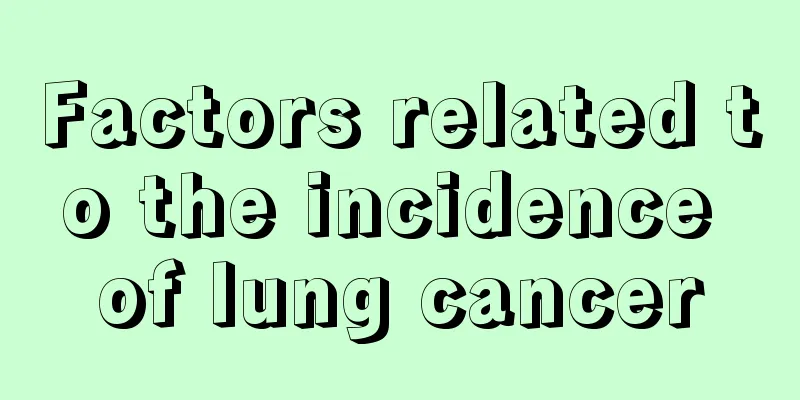How to treat cervical vertebrae compressing nerves

|
As we age, the vertebrae between our bodies will degenerate and age, becoming thinner and narrower. Long-term wear and tear coupled with external forces can affect the health of the cervical spine and even cause symptoms. In fact, there are many ways to improve cervical spine problems, such as good living habits, correct sitting posture, proper exercise, etc., which will be of great help to the health of the cervical spine. There are four main factors causing cervical spondylosis As we age, the intervertebral discs naturally begin to degenerate. The intervertebral disc becomes thinner, the intervertebral space becomes narrower, the ligament and joint capsule begin to loosen, and the wear of the articular processes increases. Over time, bone hyperplasia will occur on the articular surfaces at the edges of the vertebrae, causing internal and external imbalance of the cervical spine. Chronic neck injuries are caused by long-term desk work, frequent lowering of the head, improper posture and other bad daily habits. Both can cause chronic damage to the neck muscles and ligaments, loosening of the joint capsule, and subsequent vertebral instability, resulting in a series of cervical spine symptoms. Acute neck injury Various sudden cervical spine injuries, such as twisting, dislocation, falling, and impact, can cause varying degrees of damage to soft tissues such as ligaments, intervertebral discs, and joint capsules, thereby causing various cervical spine diseases. The neck is often invaded by wind, cold and dampness, which leads to poor circulation of qi and blood, blockage of meridians, pain and induction of this disease. There are six common types of cervical spondylosis: Cervical spondylosis Muscle spasms and pains in the head, neck, shoulders and back. The cervical spine is stiff and ankylosing, making it difficult to turn sideways or tilted to one side. He gets tired easily and cannot work at a desk for a long time. He often suffers from stiff neck due to weakness in upper limbs. 2 Cervical spondylotic radiculopathy Persistent pain in the neck, shoulders and back, which worsens in paroxysmal patterns. The fingers of the affected upper limb are numb, weak and have muscle atrophy. Coughing or moving the neck to a certain position may precipitate worsening of symptoms. If the C6 nerve root is compressed, numbness will occur in the index finger and thumb; if the C7 nerve root is compressed, numbness will occur in the index finger and middle finger; if the C8 nerve root is compressed, numbness will occur in the ring finger and little finger. 3Vertebral artery type cervical spondylosis Neck pain or neck and shoulder pain, difficulty in neck movement, paroxysmal vertigo, dizziness and headache, sometimes nausea, vomiting, deafness and tinnitus, and in severe cases, insomnia and cataplexy. Many people believe that although cervical spondylosis is difficult to treat and painful, it will not cause death and is not a fatal disease. In fact, this view is wrong. Cervical spondylosis can cause cervical heart syndrome: manifested as precordial pain, chest tightness, arrhythmia (such as premature beats, etc.) and ST segment changes in the electrocardiogram, which can easily be misdiagnosed as coronary heart disease. Taking medicine unnecessarily will damage your heart and blood vessels. What is more serious is that cervical spondylosis can cause the patient's blood pressure to rise or fall, among which high blood pressure is the most common, which is called "cervical hypertension". Since cervical spondylosis and hypertension are both common diseases among middle-aged and elderly people, the two often coexist. How many patients with cardiovascular and cerebrovascular diseases have died or become disabled due to cerebral hemorrhage caused by high blood pressure. They only know the dangers of high blood pressure but not the root cause of the disease. How many patients are unable to realize at the end of their lives that they died of cervical spondylosis rather than high blood pressure. 4. Sympathetic cervical spondylosis Neck pain or migraine, dizziness, blurred vision, palpitations, chest tightness, cold limbs. Low skin temperature or fever in hands and feet, soreness and swelling in the limbs, generally without radiating pain or numbness in the upper limbs. In severe cases, it can cause throat discomfort. 5. Cervical spondylotic myelopathy The lower limbs feel tight and weak, the gait is unsteady, and there is a heaviness when lifting steps. The upper limbs feel weak, sore and heavy, objects held fall, and the limbs have an electric shock-like sensation, accompanied by dizziness, headache, and weak bowel movements. In severe cases, it can lead to paralysis and incontinence. 6. Mixed cervical spondylosis Clinically, patients with two or more of the above types of cervical spondylosis can be regarded as mixed cervical spondylosis. It is common to see both nerve root and vertebral artery types or both nerve root and sympathetic nerve types. Pathologically, mixed involvement of multiple tissues is absolute, while simple involvement of the nerve roots, vertebral arteries or spinal cord is relative. Cervical spondylosis area Two types of people who are prone to cervical spondylosis People whose butts stick to the chair: office white-collar workers, computer professionals, accountants, writers and other long-term desk workers. Occupational hazards: Teachers, drivers, assembly line workers, etc. who maintain one posture for more than 5 hours a day and are inactive for half a day are prone to bone hyperplasia. Hazard 1: Stroke According to incomplete statistics from the Chinese Academy of Medical Sciences, more than 90% of stroke patients have cervical spondylosis. The scary thing is that many people don't pay attention to it. It is only after the stroke that they find out that the cervical spondylosis induced brain nerve compression and caused the stroke. Stroke Hazard 2: Cataplexy It is mainly caused by vertebral artery compression. Due to the lack of attention to cervical spine health, many patients are misdiagnosed as neurotic migraine. If they do not receive correct treatment for a long time, severe patients will suffer from cerebral congestion and sudden collapse. Cataplexy Hazard 3: Cerebral infarction, brain atrophy Many patients with cervical spondylosis suffer from cerebral infarction, cerebral atrophy and other diseases due to vertebral artery spasm and embolism. Brain atrophy Hazard 4: Paralysis Many patients with cervical spondylosis lack knowledge about the disease and do not take it seriously. Due to lack of timely treatment, cervical spondylosis causes stimulation and compression of the spinal cord, nerves, etc., which can easily lead to unilateral or bilateral upper limb paralysis or incontinence. Hazard 5: Frequent tinnitus or even deafness Many patients with cervical spondylosis suffer from spinal compression, which damages the sympathetic nerve endings of the cervical spine, leading to insufficient blood supply, and ultimately causing serious consequences such as frequent tinnitus or even deafness. Hazard 6: Neurogenic gastrointestinal dysfunction Many people suffer from "gastric ulcer" which cannot be cured for a long time or recurs repeatedly. In fact, this phenomenon is caused by neurogastrointestinal dysfunction induced by the obstruction of the vertebral artery in the cervical spine. Hazard 7: Facial muscle atrophy, facial paralysis Many patients with cervical spondylosis suffer from facial muscle atrophy and facial paralysis due to vertebral artery spasm and embolism. Hazard 8: Stubborn insomnia, neurasthenia Clinical observations show that more than 70% of patients with intractable insomnia and neurasthenia have cervical spondylosis, but even many doctors are not aware of this during the early stages of treatment. Simply treating insomnia will delay the best period of treatment and eventually lead to severe depression or mental disorder. Hazard 9: Cerebral thrombosis A large number of cervical spondylosis patients do not pay enough attention to the disease, which leads to intervertebral disc deformation, vascular mutation and lesions, resulting in blood vessel blockage and insufficient blood supply, which in turn induces cardiovascular and cerebrovascular diseases. Hazard 10: Menopausal syndrome Hazard 11: Periarthritis of shoulder, stiff shoulder Basic knowledge of cervical spine Why does my neck make a sound when I turn it? Because our body is not supplied with enough qi and blood, our body becomes hardened and our joints are dry-grinded due to ischemia. A body deficient in both Qi and blood is equivalent to an axle without oil. Many people have ridden a bicycle and know what it feels like if the axle is short of oil. It must be difficult to ride, and you will feel that the ball bearings inside are not flexible and make noises, a bit like the noise in our necks. The only difference is that the rotation of a bicycle axle relies on oil, while the rotation between our bones relies on blood. When we are deficient in both blood and qi, the intervertebral discs between our bone joints do not have sufficient blood supply, which will cause dry grinding and naturally produce noise. How should we regulate? 1. More activities Friends who use computers every day should get up and move around after using the computer for a while, and move their necks at the same time, but do not do 360-degree circular movements. Only turn 90 degrees to the left and 90 degrees to the right to ensure that the ligaments on both sides of our neck can be evenly stretched in a short time to improve local blood supply. And remember to move slowly. 2. Don’t let your neck get cold In particular, do not let the cervical spine be blown by cold wind. When the cervical spine gets cold, cold and damp air can easily enter the body and aggravate the calcification of the cervical ligament. 3. Avoid carbonated drinks Reduce the intake of all carbonated drinks, including cola, because this boiling frog process is gradual and therefore difficult for people to take seriously. 4. Open up the meridians This is the most important point. If your neck is uncomfortable, the easiest way is to write the character "米" with your chin. You can do this once a day, or you can place the Houxi acupoint on the table to ensure blood circulation in the cervical spine and make your cervical spine feel warm instead of cold water. 1. Difficult to cure migraine. 2. Numbness and pain in one or both fingers, weakness and atrophy of hand and upper limb muscles. 3. Some people may suffer from cerebral infarction, cerebral atrophy, etc. due to vertebral artery spasm and embolism. 4. The neck is stiff, and the slightest movement causes an "electric shock-like sensation" and stars in the head. 5. Cataplexy: suddenly fainting on the ground during daily activities and recovering on its own after about 3 minutes; and this happens multiple times. Such patients should avoid dangerous work, as the consequences of an attack are dangerous. The cause is compression of the second segment of the vertebral artery. 6. Upper limb pain, paresthesia, unclear radial artery pulse, pale and swollen limbs. I hope that through the above, everyone can understand the harm of cervical spondylosis. Everyone should actively protect their cervical spine, do a good job of care, and not let the condition worsen. You can do more neck exercises in daily life. 1. Both lower limbs are weak and heavy as if filled with lead, and there is a "band-like feeling" in the chest and waist. 2. Headache, dizziness, neck discomfort and soreness, and crackling noises during activities. 3. Chest tightness, shortness of breath, and pain in the precordial area are easily misdiagnosed as "angina pectoris"; loss of appetite, upper abdominal distension and pain are easily misdiagnosed as "gastric ulcer"; pain in both shoulders is easily misdiagnosed as "periarthritis of the shoulder". 4. Frequent dreams, irritability, restlessness, swelling and pain in the forehead and back of the head, and a feeling of "a lid on" on the head 5. My hands are cold and numb, my upper limbs, shoulders, and neck are numb and painful, I feel restless, and I don’t know where to put my head and neck. . 6. Pain in the limbs, sweating, increased sensitivity of the finger nerves, facial muscle twitching, eye twitching, and palpitations. |
<<: Is there a difference between monkey mushroom and Hericium erinaceus
Recommend
Folk remedies for treating hemorrhoids, small remedies for treating serious diseases
Once hemorrhoids occur, the pain they bring to pa...
How to treat primary liver cancer? Try 6 treatments
Primary liver cancer is actually a relatively com...
Are pancreatic cancer patients contagious?
If there are pancreatic cancer patients around yo...
What is the use of boiling water with iron leaves
The cycad is a common plant in our lives. It has ...
How does malignant lymphoma metastasize
How does malignant lymphoma metastasize? 1. Lymph...
What should be paid attention to when using removable dentures
As living standards continue to improve, more and...
What's wrong with hot feet
People with better physical constitution will not...
How is Vitiligo Syndrome treated?
Vitiligo syndrome is often what we call vitiligo,...
What medicine is good for babies with milk clots
During the growth of babies, the characteristics ...
What to do if the pacifier can't suck out milk
Babies basically use pacifiers when they are youn...
How to wash sausage
In the vast southern region of China, every house...
The efficacy and function of cardamom
When it comes to the effects and functions of car...
What are the methods of eye massage for eye bags
Because the skin around the eyes is very thin and...
The benefits of head massage
Head massage is a form of Traditional Chinese Med...
Is ice silk mat harmful to human body
Ice silk mat is a kind of mat used by many people...









